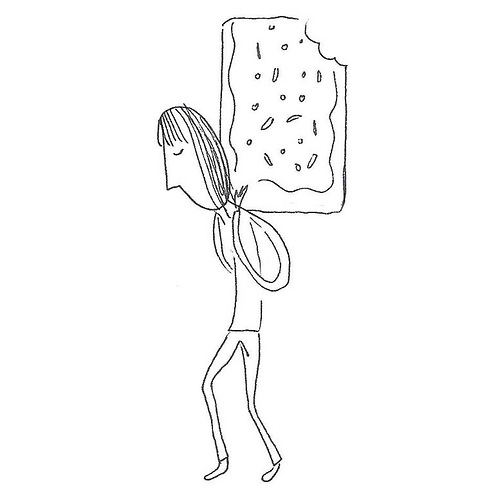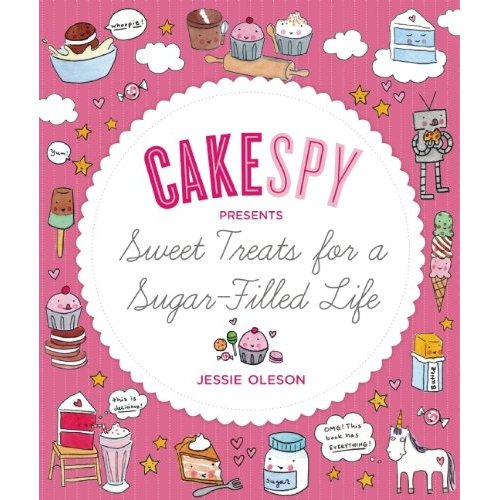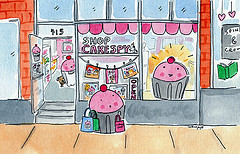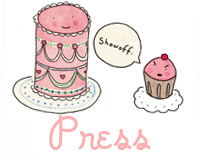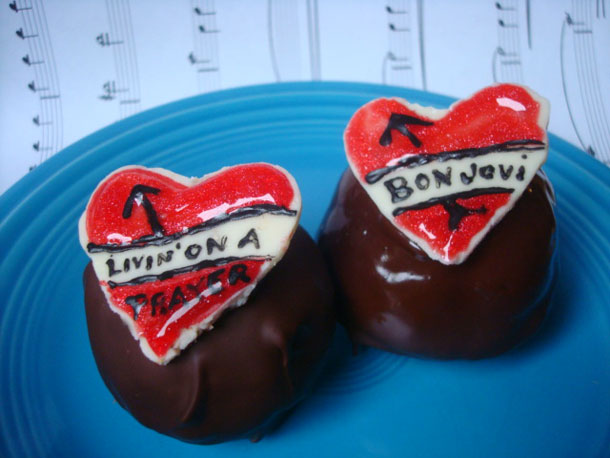Well-Bread: Hot Raisin Bread Recipe from Big Girls, Small Kitchen
 Saturday, October 9, 2010
Saturday, October 9, 2010  CakeSpy Note: This is a guest entry from Cara, a co-author of Big Girls, Small Kitchen, a blog devoted to "quarter-life" cooking (and the home of the Watermelon Ice Cream Cake). Per the writer, "this article is about the fantastic, nostalgic Hot Raisin Bread that my mom always made me for breakfast when I was growing up. And is it sweet? you may ask. Not only is it sweet, but it's topped with the most delicious crust of butter, sugar, and cinnamon."
CakeSpy Note: This is a guest entry from Cara, a co-author of Big Girls, Small Kitchen, a blog devoted to "quarter-life" cooking (and the home of the Watermelon Ice Cream Cake). Per the writer, "this article is about the fantastic, nostalgic Hot Raisin Bread that my mom always made me for breakfast when I was growing up. And is it sweet? you may ask. Not only is it sweet, but it's topped with the most delicious crust of butter, sugar, and cinnamon."
 My mom made us breakfast every single day while we were growing up, before we piled into the car and she dropped us off at school on her way to work. When I say I don't understand people who don't eat breakfast, I say this with the perspective of someone who ate scrambled eggs, pancakes, French toast, corn muffins, and hot raisin bread every morning, not just someone who ate, you know, a bowl of cereal. Later, in middle and high school, we did sometimes eat just cereal or yogurt and fruit, but even then there were occasions when we'd get the full breakfast treatment.
My mom made us breakfast every single day while we were growing up, before we piled into the car and she dropped us off at school on her way to work. When I say I don't understand people who don't eat breakfast, I say this with the perspective of someone who ate scrambled eggs, pancakes, French toast, corn muffins, and hot raisin bread every morning, not just someone who ate, you know, a bowl of cereal. Later, in middle and high school, we did sometimes eat just cereal or yogurt and fruit, but even then there were occasions when we'd get the full breakfast treatment.On one of these days late in high school, my mom made hot raisin bread. She took it out of the oven, I cut myself a wedge, and when I drove my fork down through the cinnamon-sugar crust on top into the biscuit-like interior, I remembered why this was always one of my favorites. It's decadent in the way that Frosted Mini Wheats are decadent--a layer of sugar, in this case cinnamon-sugar and butter, bursts in your mouth, distinguishing the relative plainness of the inside. I was a junior or senior, and we had a field hockey game that afternoon against one of our rivals. The tradition was to dress up in funny outfits on game days, and I can only imagine what Phoebe and I and the rest of our teammates were wearing. Whether it was my breakfast or my outfit, I played one of my best games ever as forward, scoring a hat trick. Three goals. These days, that kind of athleticism feels like it belonged to another person completely.
Anyway, some other parent came up to my mom and was like, "What do you feed her for breakfast?!"
And my mom, I think, answered truthfully, "Well, it's this dish called Hot Raisin Bread..."
I wasn't eating my Wheaties. I was eating my mom's home-cooked food and apparently it did me better than any cereal.
When I baked this recently, I ate it as an afternoon snack. The cinnamon-y scent filled my apartment. I cut a wedge, poured some some tea, and waited for something to happen. Sure I wasn't playing hockey, but wouldn't mom's magic breakfast work in my Brooklyn apartment too? I did some work on the book, researched my summer vacation, and kept on waiting. And waiting. I haven't found out yet if the Hat Trick Raisin Bread does anything for no-longer athletic adults, but it definitely still tastes really good.
 Hot Raisin Bread
Hot Raisin BreadMakes 1 bread, serves 6-8
from Quick Breads
Ingredients
- 2 cups flour
- 2 teaspoons baking powder
- 1/4 teaspoon salt
- 1/4 cup vegetable oil
- 3/4 cup milk
- 1/3 cup raisins
- 2 tablespoons sugar
- 2 tablespoons butter, melted or soft
- 1/4 cup cinnamon sugar (1/4 cup sugar plus 1/2 teaspoon cinnamon)
- Preheat the oven to 450°F. Line a baking sheet with parchment.
- Combine the flour, powder, salt, raisins, and sugar in a medium bowl. Add the oil and milk and mix into a soft dough.
- Spread with the butter and sprinkle with the cinnamon sugar.
- Bake for 10-12 minutes, until just golden. Cut into squares and serve hot--this doesn't really weather well, so make it when you plan to eat.
- Transfer it to the baking sheet and pat the dough into a rough 8-inch square, about 1/2-inch thick.
Keep up with Cara's baking adventures on Big Girls, Small Kitchen!










